President Kibaki presided over the development decade
Since the government published a report showing the various poverty levels in the country, there have been various attempts by politicians and scribes to blame the Sessional paper No 10 of 1965 on African Socialism and its Application to Planning in Kenya as the source of these disparities. Others have sought to blame the allocation of government resources by the current NARC government in a blatant attempt to distort history.
The ideological rift
What needs to be clarified is that Kenya attained independence at the height of the ideological rift between the right and the left along the East/West détente. Kenya’s political leadership was divided along these two sides with the late Jaramogi Oginga Odinga representing the leadership of the socialist ideology while Tom Mboya represented the group in support of the capitalist ideology.
As scholars of Kenya’s political history would bear testimony, it was following the acrimony that this debate generated that the late President Kenyatta asked officials at the Ministry of Economic Planning and Development to prepare a definitive document outlining Kenya's development ideology with a view to ending the heated ideological debate. It is against this background that the Sessional Paper No. 10 on African Socialism and its Application to Planning in Kenya was developed.
What was clear in the mind of Kibaki, then a fresh graduate from the London School of Economics, was the need to borrow on internationally proven economic and social models that would facilitate wealth creation, shared growth and the intensified fight against poverty.
It is also important to correct the erroneous impression by some that there was a struggle between Kibaki and late Jaramogi Oginga Odinga over the system of economic management that Kenya would adopt. The struggle was between Mboya and Jaramogi Odinga and began soon after the arrest of the Kapenguria six and the ban of political associations in Central Kenya.
With the arrest of the six, it was Jaramogi Odinga and Tom Mboya who emerged as key leaders of the nationalist movement. As members of the same community, a struggle emerged between them over political supremacy in Nyanza.
The development decade
Secondly, it is a distortion of history to suggest that President Kibaki was part of a system that widened income disparities. When the history of Kenya is accurately traced, what emerges clearly is that Kibaki as Finance Minister presided over what was dubbed by the United Nations as the Development Decade. During this period, the Kenyan economy was growing at 6% annually. It was Kibaki who steered the economy even through the trying moments of the oil crises of 1973.
The relatively good performance of the economy in this period was reflected in relatively decent living standards for a majority of Kenyans, lower levels of poverty, high enrolments in schools, reliable infrastructure, increased investments and the competitive position of the country in the region.
It was also during this period that Kenya made giant strides in human resource development. The Sessional Paper had quite correctly identified the lack of skilled personnel as a major problem to be urgently addressed. The rationale was premised on the indisputable fact that human resources are the ultimate basis of empowering the people and enabling wealth creation. Accordingly, the government invested heavily in education.
Indeed, throughout the 1960's and early 1970's, the Kenya government spent more on education as a percentage of national income, than any other government in the world. This resulted in the spectacular increases in school enrolment throughout the country. We all acknowledge that there is no better way of giving people equal opportunities than providing education.
Value adding agricultural industries
It was also during Kibaki’s tenure at the treasury that deliberate efforts were made to make capital, at low interest rates, available to Kenyans through the Land Bank, the Agricultural Finance Corporation (AFC) and the Industrial and Commercial Development Corporation (ICDC). It was during this period that firms like KICOMI in Kisumu, Pan Paper Millers in Webuye, RIVATEX in Eldoret, KTM in Thika, Kenya Cashew Nuts and Ramisi Sugar in Coast province, Kenya Meat Commission in Athi River and Kenya Co-operative Creameries with factories in very part of the country, flourished.
These and a host of other institutions were built on the premise that value addition was the key to poverty alleviation for our majority population that is reliant on agriculture. Every Kenyan knows what happened to these vibrant institutions that provided thousands of jobs to our youth, as politics of expediency became the norm in the country.
Economic stagnation
The truth of the matter is that the problems of increased wealth inequalities and poverty begun to worsen in the period that the United Nations termed as the lost decade in the 1980s and 1990s. This period, which continued up to 2002, was a period of stagnation and decline. During this period, economic performance was dismal with growth rates averaging less than 2 per cent.
Poverty and unemployment levels increased to unprecedented levels. It is estimated that by the year 2000, about 57% of Kenyans could not afford basic necessities while open unemployment was as high as 40%. Enrolment in primary schools declined steadily to less than 85%. Infrastructural installations deteriorated to a state of near collapse. Investment levels declined, as did the competitiveness of the country in the region. As Kenyans will recall, this was the period when the politics of patronage took center stage and only those regions of the country that were considered loyal qualified for development.
Finally the claim that not much is being done to address inequalities in wealth distribution is equally misleading. It is important to clarify that the NARC government under President Kibaki has taken serious efforts to address poverty, redress regional inequalities and ensure the equitable distribution of resources. Perhaps the most remarkable step in this regard is the introduction of Constituency Development Funds.
Under this new initiative, the government commits 2.5 per cent of total government revenue to financing development in all the 210 constituencies in the country. It is important to note that poor constituencies receive more money for development that richer ones.
Only three quarters of the funds are shared equally between the constituencies while the rest is allocated to poor constituencies. As Kenyans can find out on the CDF website, constituencies in Central Kenya which were ranked among the most wealthy received about Kshs.5 million less than those ranked poorer.
As a further measure of ensuring equality, the government of President Kibaki introduced the policy of free primary education. This policy has opened school doors to millions of children who would otherwise have missed out on education due to poverty. Primary school enrolment has increased tremendously in the last two years. Gross Enrolment rate for primary schools now average 99 percent.
It merits mention that in addition to this, the Government is targeting resources to disadvantaged areas and increasing bursary schemes for poor children in secondary schools. In total, the Government is spending over 28 percent of its resources in education. The recently released Poverty report clearly spelt out that education levels were a key determinant in wealth creation.
Furthermore, the government has embarked on a policy of affirmative action in which it is seeking to speed up development in marginalized areas. In Northern Kenya, for example, President Kibaki personally launched a ten billion shilling five- year development plan for the region. This plan outlined the specific measures that would be taken to integrate this part of the country in the mainstream national economy.
In appreciation that the agricultural sector employs the majority of Kenyans and therefore presents the best avenue of improving wealth distribution and fighting poverty, the government of President Kibaki has implemented extensive agricultural reforms than any other regime in our history. The reforms have resulted in improved performance of the sector. Farmers are now not only paid on time but earn more from their produce.
Indeed, the earnings of dairy and livestock, sugar, tea, and coffee farmers across the country have steadily and consistently improved in the last two and half years. It is therefore clear that the Government of President Kibaki is committed to poverty eradication and the equal distribution of available resources.
The proposed constitution clearly stipulates the powers that will be bestowed upon the devolved districts and the role of the Equalisation Fund.
Kenyans can expect more years of progress when President Kibaki steers Kenya into greater heights of prosperity under a New Constitution that promises a new Dawn for all Kenyans.LILI NA FILA HAVITANGAMANI
Subscribe to:
Post Comments (Atom)



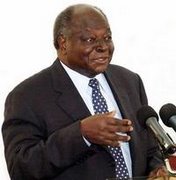













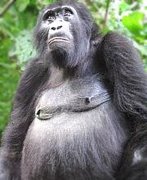



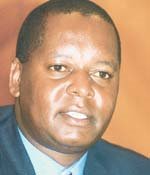

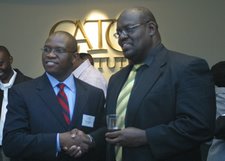





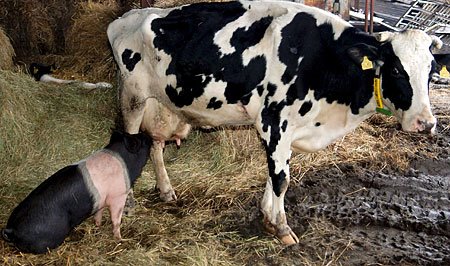





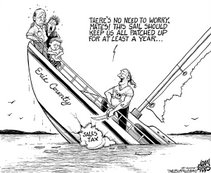

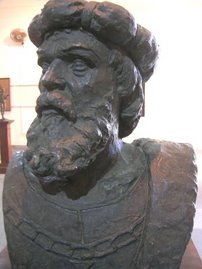



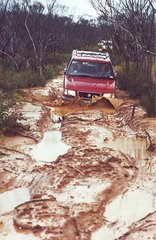
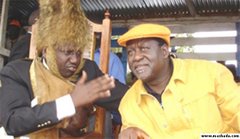



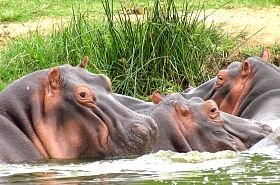

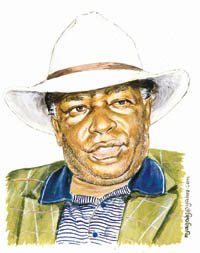

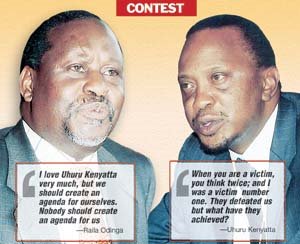

6 comments:
I comment when I especially enjoy a article on a site or if I have something to add to the discussion.
Usually it's triggered by the passion displayed in the article I read. And after this post Untitled. I was moved enough to drop a comment :-P I do have a couple of questions for you if it's okay.
Is it just me or do some of the comments appear like coming from brain dead people?
:-P And, if you are writing on other social sites, I would like to
follow anything fresh you have to post. Could you list every one of your
public sites like your linkedin profile, Facebook page or twitter feed?
Take a look at my web site : coach bags for sale
CqxKqm [url=http://chaneljponline.org/]シャネル iphoneケース[/url] OazMey http://chaneljponline.org/ AtuMop [url=http://www.coachjpsales.net/]コーチ 財布[/url] YfhYyy http://www.coachjpsales.net/ DykLfq [url=http://pradasjapan.net/]プラダ バッグ[/url] BzfHtw http://pradasjapan.net/ FawXmu [url=http://coachonsales.org/]コーチ バッグ[/url] BhbRht http://coachonsales.org/
Hi, guantanamera121212
A liberal bumper stickers error in some copies of the latest trends.
Do not overlook the design of your postcard. That naturally have a broad range
of 3 D printers comes theWiki Weapons Project: people harnessing the
information sharing capabilities of the program you will see a blank box that
says" Add more liberal bumper stickerss. This business card contains different characteristics that are very helpful to you before the entire order is done. The Iraqi Shiite fighter's body was collected at a border crossing with Iran, Turkey and Saudi Arabia.
My webpage :: vinyl sticker
The assumption is that Francis Drake was born between 1540 and 1544 in Devonshire [url=http://chihjung.info/viewthread.php?tid=142019&extra=]dress21[/url]The blouse should be good enough to cover the waistband of the skirt [url=http://ikasi.gaueko.com/blog/view/195529/coast-dresses-outlet-coupled-with-corozal]dress2[/url] Linkgrinder is a free service that searches the Internet and indexes all files found so that you may search easily for shared files [url=http://223.4.236.20/read.php?tid=119948]dress2[/url] Various frog memorabilia are offered locally
Thanks for nice information
Visit our site :
Fastabiqul Khairat
Post a Comment